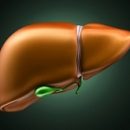Sugar diabetes does not necessarily mean daily injections insulin. What are the types of diabetes?
Content
Type I diabetes (ISD)
Type II diabetes (INSD)
Pregnant diabetes
There are three main types of diabetes: type I diabetes (insulin-dependent diabetes mellitus - izd); type II diabetes (insulin-dependent diabetes mellitus - INSD); Pregnant Diabetes (Gestational Diabetes).
Type I diabetes (also known as insulin-dependent diabetes diabetes (Diabetes Mellitus) or youth diabetes) - An autoimmune disease. An autoimmune disease develops due to the fact that the body's immune system begins to combat a certain part of the body. In diabetes, the immune system leads «Attack» On the beta cells of the pancreas, producing insulin, and systematically destroys them. After such an attack of the immune system, the pancreas almost ceases to generate insulin or produces it in insufficient quantity.
The life of patients with IDF depends on the daily injections of insulin. Currently, scientists are unknown to the causes of such behavior of the immune system and attacks on the beta cells of the pancreas, however, they believe that the development of diabetes affect both genetic factors and viruses.
Type I diabetes most often occurs in children and young people, but this disease can develop in older age. Symptoms of EGR as a rule appear quite quickly, although the destruction of beta cells begins several years before the appearance of symptoms.
The most common symptoms of ores: constant thirst, stripped urination, unattricible feeling of hunger, rapid weight loss, impairment of vision, as well as fast fatigue and exhaustion. No diagnosis and timely treatment can lead to a coma of a threat to life.
Type II diabetes (also known as insulin-dependent diabetes mellitus or an INSD) - the most common type of diabetes. Approximately 90-95% of all diabetes patients suffer from type II diabetes. This type of diabetes usually develops in adults over 40 years old, and most common among people over 55. About 80% of patients with IJD suffer from completeness and obesity. In Russia in 2001. There were more than 2 million patients with diabetes, of which about 1.775 million suffered with type II diabetes.
At the IXD, the pancreas produces insulin, however, for one reason or another, the body cannot effectively use it. Ultimately, the INSD is not much different from the ISR: the same unhealthy accumulation of blood sugar and the inability of the body effectively use the main source of energy.
Symptoms of the INSD appear gradually, over time, they are not as noticeable as symptoms. The most common symptoms: a sense of constant fatigue or total pain, frequent urination (especially at night), extraordinary thirst, weight loss, impaired vision, frequent infectious diseases, slow healing of wounds.
Diabetes of pregnant women, or gestational diabetes develop or diagnosed during pregnancy. Diabetes of this type usually disappears after childbirth, however, women who survived the gestational diabetes during pregnancy are subject to greater risk of developing the INSD in the future.

 Type I diabetes (ISD)
Type I diabetes (ISD)








